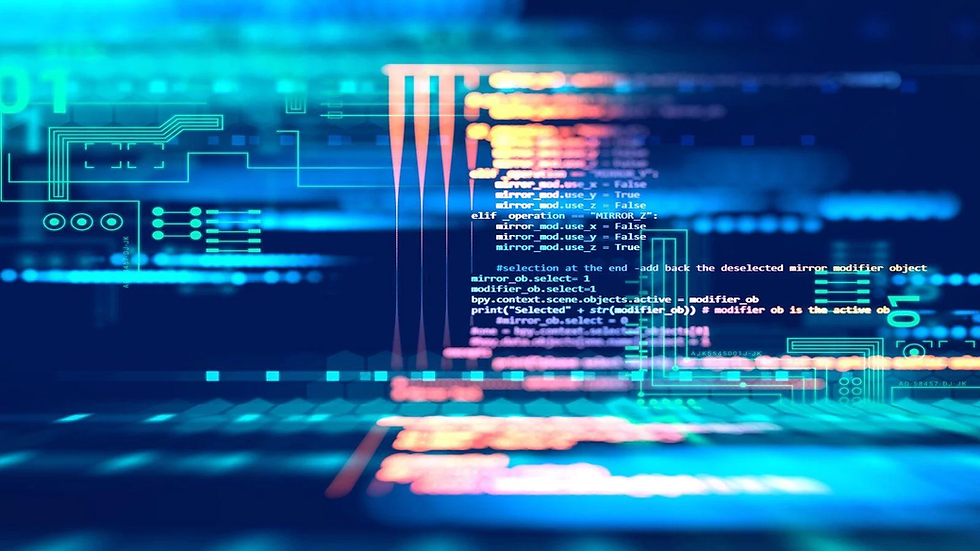How AI Pair Programming is Shaping the Future of Coding and What It Means for Developers
- Souss Licht
- Jul 8
- 4 min read
As technology evolves at breakneck speed, the world of software development is undergoing a major transformation, particularly with the rise of AI pair programming tools like GitHub Copilot and Cody. These tools are not just helpful ; they are fundamentally changing how developers write, debug, and deploy code. In this exploration, we will discuss how developers are adjusting to what is often described as "code whispering," a blend of human effort and AI collaboration during coding sessions.

The Rise of AI Developer Tools
The introduction of AI-assisted coding has dramatically altered development workflows. Tools like GitHub Copilot utilize sophisticated machine learning models to suggest code snippets based on developers' current tasks. This new dynamic allows AI to act as a coding partner, which can significantly lower the cognitive load on developers.
For instance, developers may find themselves spending 40% less time on repetitive tasks, such as writing boilerplate code or searching for the right syntax. A recent survey revealed that 78% of developers using AI tools reported spending more time on critical problem-solving aspects of their projects. This newfound efficiency enables teams to iterate quickly over features and innovate faster, leading to a more agile software development process.
Embracing "Code Whispering"
The phrase "code whispering" captures the collaborative spirit of human and AI interactions in programming. In contrast to traditional pair programming, where a human collaborates directly with a peer, this workflow invites AI to join the team, allowing developers to capitalize on its capabilities.
This shift in mindset means that developers must trust AI’s suggestions while also applying their own judgment. For example, a financial software project team might use AI pair programming to explore various algorithms for fraud detection, allowing the AI to suggest adjustments in real time. By doing this, developers are encouraged to think creatively and explore options they might not have initially considered.
Real-world applications abound. In a case study involving a software team at a tech startup, developers used AI tools to prototype a machine learning application quickly. The AI suggested tuning parameters that increased algorithm efficiency by 25%, illustrating how AI can enhance exploratory phases and foster innovation.
Enhancing Productivity and Code Quality
AI tools have led to remarkable increases in productivity for development teams. Industry studies show that coding speed can improve by up to 30% when utilizing AI-assisted solutions. This enhancement comes not only from writing code faster but also from the AI’s ability to provide accurate code suggestions.
For example, with AI integrated into testing frameworks, developers can reduce the frequency of bugs. Research indicates that AI tools can improve code quality by identifying 60% more potential issues pre-release. This proactive approach to error detection allows developers to address problems before they escalate, ultimately leading to higher-quality software.
As the focus grows on building clean and maintainable code, AI tools shine as invaluable assets. They help developers maintain high standards while expediting the debugging process, allowing teams to deliver high-quality software consistently.
Human Creativity Meets AI
While AI pair programming tools bring numerous advantages, it is vital to remember that human creativity remains at the core of software development. Important skills such as problem-solving, design thinking, and innovative thinking cannot be replicated by AI.
This distinction becomes especially clear with complex projects that require imaginative solutions. AI might suggest various approaches, but developers must understand the reasoning behind each decision. For example, when developing a user interface, AI may propose layouts, but only the developer can determine the best user experience.
In this way, developers become conductors of a creative orchestra, guiding AI suggestions while infusing their intuition into the process. This hybrid approach may redefine the developer's role, transforming them into architects and strategists rather than mere coders.
The Risks of Over-reliance
Despite the clear benefits, there is a risk of over-reliance on AI developer tools. If developers depend too heavily on AI, their coding fundamentals may weaken. Skills and knowledge that were once second nature could diminish if AI takes over too many tasks.
Moreover, biases present in AI training data can lead to harmful coding practices. If developers consistently accept AI suggestions without critical evaluation, they may inadvertently adopt poor patterns. This reality emphasizes the importance of approaching AI-generated suggestions with scrutiny, validating proposals before incorporating them into the codebase.
The Future of Software Development
Looking forward, AI pair programming is set to reshape the role of software developers significantly. We may see specialized coding roles emerging, focusing on overseeing AI interactions, serving as validators in the development process.
Imagine AI tools evolving to integrate seamlessly with existing development environments, assisting not just with coding but also architectural design and project management. Such robust AI coding assistants could bring entire projects from inception to deployment without compromising quality, improving efficiency at every stage.
Developer tools will likely evolve into a cohesive ecosystem, blending human creativity with AI capabilities to streamline workflows and enhance productivity.

Final Thoughts
AI pair programming tools are revolutionizing the landscape of software development. The shift towards a "code whispering" environment calls for a blend of trust, creativity, and careful evaluation, marking a new chapter in coding collaboration. As developers adapt to this co-creative relationship with AI, they stand to gain not only productivity but also an improvement in code quality.
To maximize these benefits, developers must remain vigilant about potential over-reliance on AI. By balancing the use of AI capabilities with the development of personal coding skills, they can harness the full potential of AI-assisted coding while ensuring the future of software craftsmanship shines brightly.
As we approach 2025 and beyond, the integration of AI pair programming is not just altering the way developers work ; it is redefining the very essence of software development in the digital age.




Comments